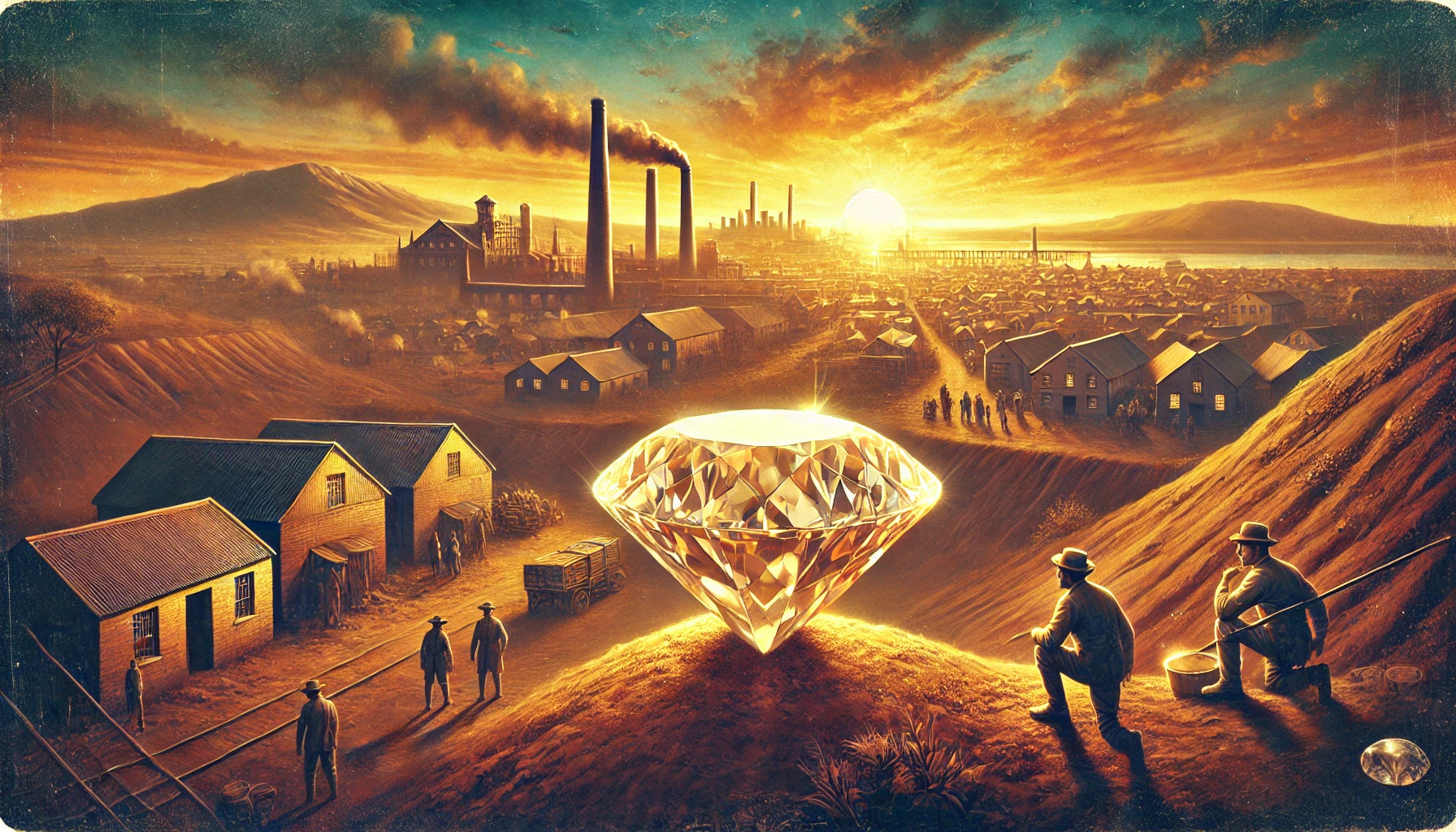The year is 1867, and whispers of unimaginable riches echo across the dusty plains of South Africa. A fever grips the hearts of men, fueled by the discovery of glistening stones that will forever alter the course of history. This, dear reader, is the story of the Great Diamond Rush, a tale of fortune, adventure, and the enduring allure of Earth’s most precious gems.
A Boy, a Stone, and the Spark of an Empire
Our story begins with a seemingly insignificant event: a young boy named Erasmus Jacobs discovers a peculiar pebble while playing along the banks of the Orange River. This unassuming stone, later known as the “Eureka Diamond,” would ignite a firestorm of excitement and set in motion a chain of events that would transform South Africa into the world’s diamond capital.
News of the discovery spread like wildfire, attracting fortune seekers from across the globe. Farmers abandoned their fields, shopkeepers closed their stores, and even sailors jumped ship, all lured by the promise of untold wealth. The once quiet landscape was soon teeming with prospectors, their eyes glued to the ground, their hearts pounding with anticipation.
The Rush Begins: From Riverbeds to Diamond Fields
Initially, diamonds were found scattered along the Orange River and its tributaries. Prospectors, armed with shovels, sieves, and an unwavering determination, combed the riverbeds in search of these glittering treasures. But the true turning point came with the discovery of diamonds in dry diggings, particularly on a farm owned by the De Beers brothers.
This marked the birth of the Kimberley mine, a legendary site that would become synonymous with diamond mining. Thousands flocked to this dusty patch of land, transforming it into a bustling tent city. The scene was one of organized chaos, with prospectors digging claims, hauling buckets of earth, and sorting through the debris in hopes of striking it rich.
The Rise of Diamond Dynasties
As the diamond rush intensified, so did the competition. Individual prospectors were gradually replaced by large mining companies, with Cecil Rhodes’ De Beers Consolidated Mines emerging as the dominant force.3 Rhodes, a visionary entrepreneur, recognized the potential of these precious stones and set about consolidating the diamond industry, ultimately controlling the majority of the world’s diamond production.
The diamond rush not only brought wealth and industry to South Africa but also shaped its social and political landscape. The influx of fortune seekers led to rapid urbanization, the development of infrastructure, and the emergence of new social classes. However, it also brought with it challenges, including labor exploitation and racial tensions.
Diamonds: A Symbol of Enduring Value
Why have diamonds captivated humanity for centuries? Their enduring value stems from a combination of factors:
- Rarity: Diamonds are formed under immense pressure and heat deep within the Earth’s mantle. Their journey to the surface is a testament to their resilience and rarity.
- Brilliance: Diamonds possess an unparalleled ability to refract light, creating a mesmerizing sparkle that has captivated cultures across the globe.
- Durability: Diamonds are the hardest known natural substance, making them resistant to scratching and wear. This durability symbolizes enduring love and commitment, making them a popular choice for engagement rings and other tokens of affection.
The Legacy of the Diamond Rush
The Great Diamond Rush of 1867 left an indelible mark on South Africa and the world. It transformed a quiet agricultural region into a global center for diamond mining, shaping the country’s economy, society, and history.10 The legacy of the diamond rush is complex and multifaceted, encompassing both the glittering allure of these precious stones and the darker aspects of their extraction and trade.
Today, diamonds continue to fascinate and inspire. They are symbols of love, wealth, and enduring value. And as we gaze upon their brilliance, we are reminded of the extraordinary journey they have taken, from the depths of the Earth to the hands of those who cherish them.




